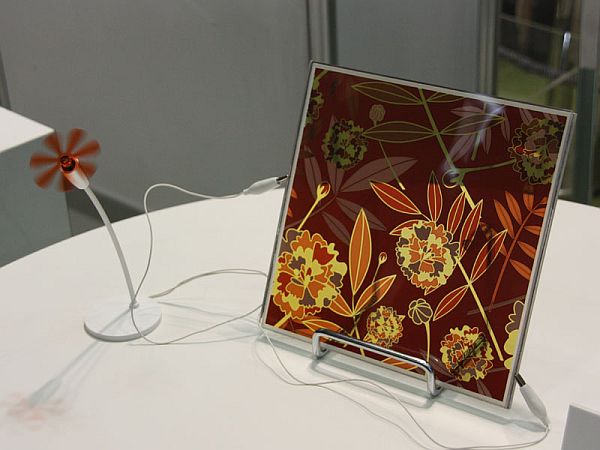
Introduction
Belonging to the family of thin film solar cells, dye-sensitized solar cells (DSSCs) are an attractive and a considerably cheaper way of producing electricity. A DSSC is designed like a traditional alkaline battery and does not require a cumbersome manufacturing process. It is made up of a titanium dioxide nano particles layer, that is porous. This layer is covered with a molecular dye that can absorb sunlight, and is submerged in an electrolyte solution with a platinum-based catalyst above it.
When sunlight passes through the cell and reaches the dye layer, it activates electrons, which then enter the titanium dioxide layer. Then these electrons flow towards the transparent electrode and get collected in order to power a load. The electrons flow through the external circuit and then re-enter the cell on a metal electrode on the back to flow into the electrolyte, which then transports them back to the dye molecules.
Trends:
The technology used in DSSCs, which are also known as pseudo-photosynthetic solar cells, is being worked upon by Sony for almost a decade now. It offers a variety of advantages for its consumers by providing many options to them. One of the most important advantages is their low cost. Also, it comes in a large number of fascinating designs and colors, to perfectly match one’s decor.
These solar cells are light in weight, which makes them ideal for use in portable devices such as solar lampshades. These DSSCs come in various shades and designs, which add to the overall beauty of the product. Sony states that these cells can have different designer patterns on top of them that can be made using the process of Screen Printing.
The benefits:
DSSCs are loaded with a number of advantages. Considered to be the most efficient thin-film low-density cells, they overcome the limitations of other similar technologies.
DSSCs are used to inject an electron directly into the titanium dioxide layer. They have better sensitivity to visible light, be it natural or artificial, making them usable and much more reliable for generation of electricity under a variety of weather conditions. Since they have the capacity to generate electricity from any amount of sunlight, high performance is achieved under indoor and low light settings. Its makers claim that even if the angle at which light hits the surface of the cell is changed, it would have negligible effect on performance. These cells can easily be termed as Gen-Y cells and have a wide scope in future for its consumers.
However, they might not fit well for large scale use if put alone. A small enhancement in the DSSC conversion efficiency might make them suitable for some of such large scale roles as well.
The lowdown:
One of the biggest disadvantages of DSSCs is their fragility brought about by changes in temperature. Since they use liquid electrolytes, they can freeze in low temperatures and also expand at higher degrees. The freezing can lead to an end of power production potentially leading to physical damage. Also, the solution used in the DSSC contains volatile organic solvents. The breakage can lead to serious problems and so the sealing of the panels should be checked carefully. On the other hand, expanding results in leaking of panels which can result into potential instability, drawback of maximum operation temperature, possible danger of evaporation, and the added cost of forming an electrical series connection. So consumers should decide appropriately before placing of the cell and making it the sole supplier of electricity at home. Researchers are currently trying to find out a way to use solidified material in the cell to overcome the above problems.
The Impact:
The DSSCs have created an awesome impact on people because of various features like low cost, attractive designs and colors and also because they are light in weight. These cells can also be converted into flexible sheets needing no protection from minor happenings like tree strikes. Despite any drawbacks, DSSCs are anytime a better option for generating electricity than the depleting fossil fuels.




